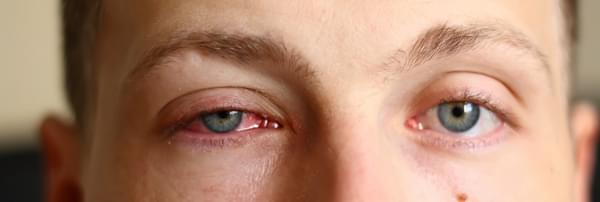Ptosis
What is ptosis?
Ptosis is a condition characterized by an abnormally low position of the upper eyelid - normally it covers about 1 mm from the cornea.
This relaxation of the eyelid makes vision difficult and can cause amblyopia (lazy eye), strabismus, double vision.

Congenital ptosis
The congenital ptosis is often observed with hypotropia (downward squint) of the affected eye. In 10% of the cases it is combined with paralysis of posterior rectus muscle (the eye cannot move upwards) or paralysis of all ocular muscles innervated by the oculomotor nerve (the eye deviates outwards and downwards).
Ptosis may be part of the congenital blepharophimosis syndrome, where it is combined with other congenital eyelid abnormalities. In 5% of the cases is observed synkinetic ptosis, such as a Marcus-Gunn syndrome (unilateral ptosis), in which the opening of the mouth or chewing movements may cause the upper eyelid raise further up than the other, normal eyelid.
In children with ptosis, especially when it is acute and bilateral, there is a characteristic compensatory head position with a raised chin. When the ptosis is unilateral and less pronounced, the child attempts to lift the eyelid by shortening the muscles of the eyebrow and the forehead (raised eyebrow and wrinkled forehead).
Acquired ptosis
The acquired ptosis is most often caused by:
- Natural aging processes that cause weakening of the tissues around the eyelid
- Weak levator muscle of the upper eyelid, resulting from various conditions
- Tumor, edema, inflammation after surgery
- Trauma resulting in direct damage to levator muscle of the upper eyelid or the oculomotor nerve
There is also the so-called pseudo-ptosis in which there is no damage to the upper eyelid muscles, but sagging of the skin that covers it.
Treatment of ptosis
The treatment is surgical. In congenital ptosis it is advisable the surgery to be performed in preschool age (3-7 years). Puberty is not an appropriate period for surgery. Often patients with untreated congenital ptosis undergo surgery for cosmetic reasons at older age. In cases of severe ptosis, especially when it is unilateral, the surgery should be done at an earlier age, in order to avoid the development of amblyopia (lazy eye). Children with mild ptosis, in which the eyelid does not interfere with eyesight, are monitored by ophthalmologist for concomitant eye problems - squinting, farsightedness, etc.
In cases of acquired ptosis surgery is usually done when the condition impairs the vision of the patient, or for cosmetic reasons.